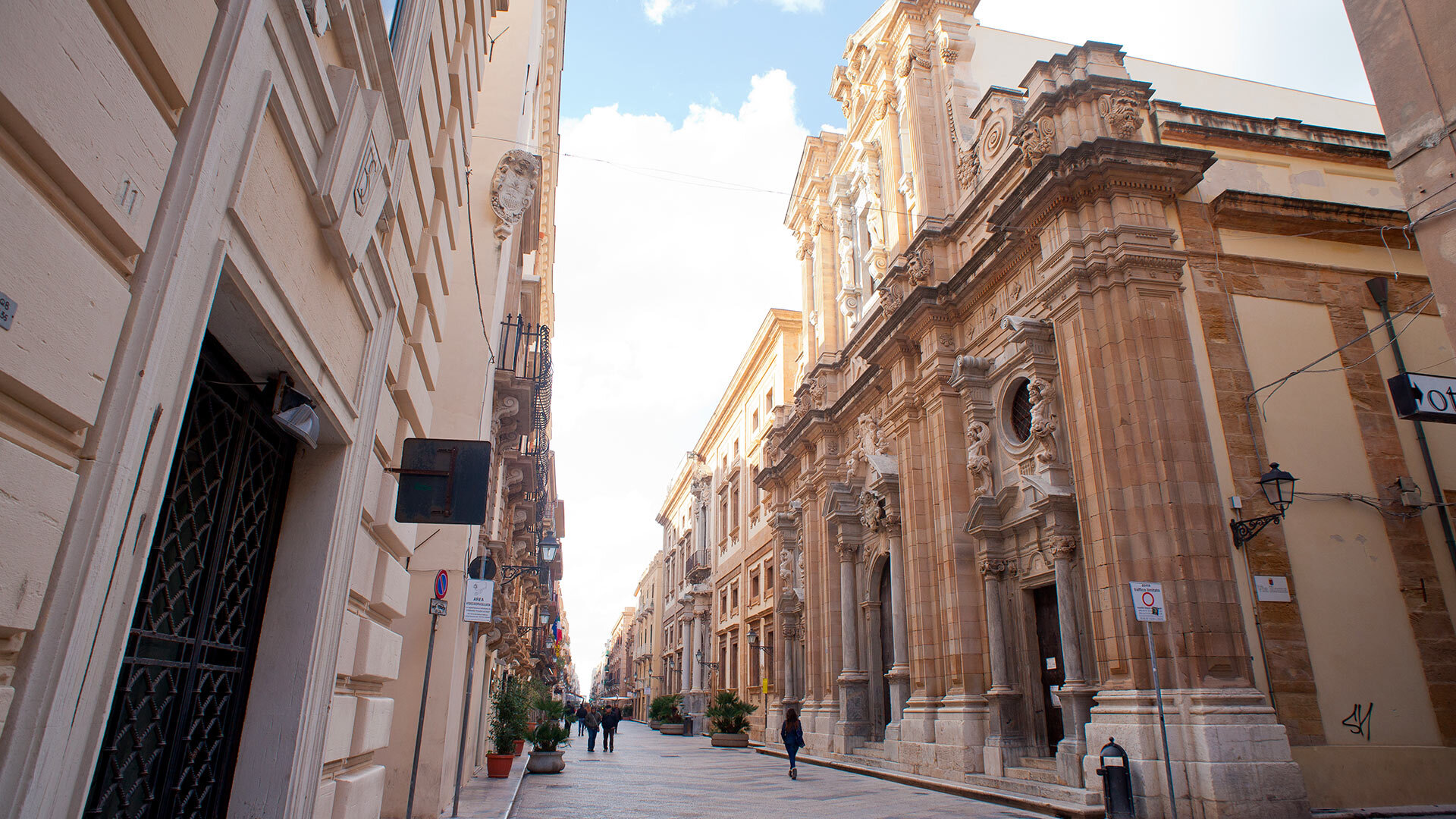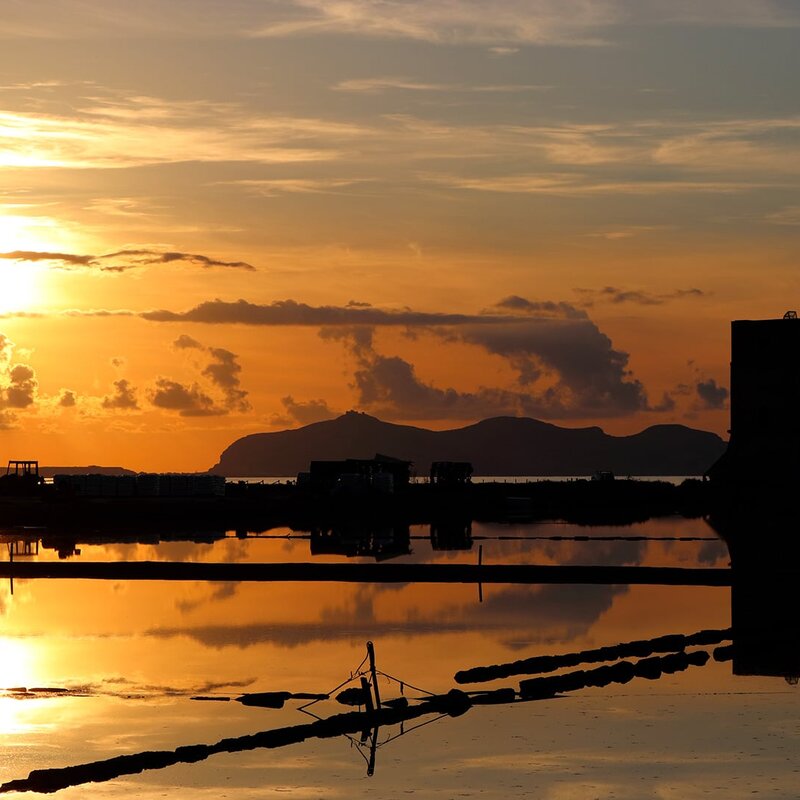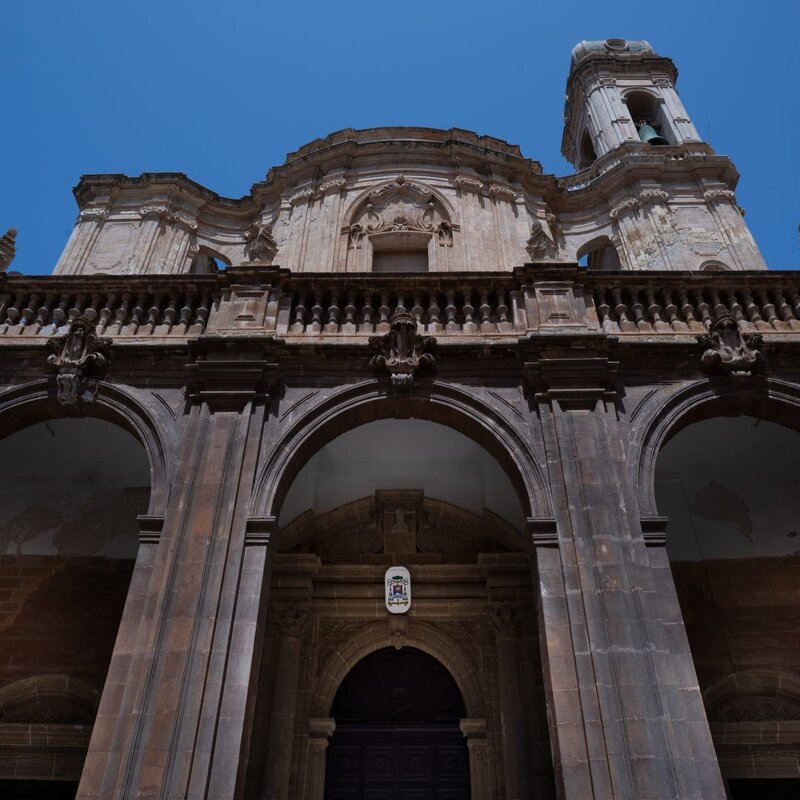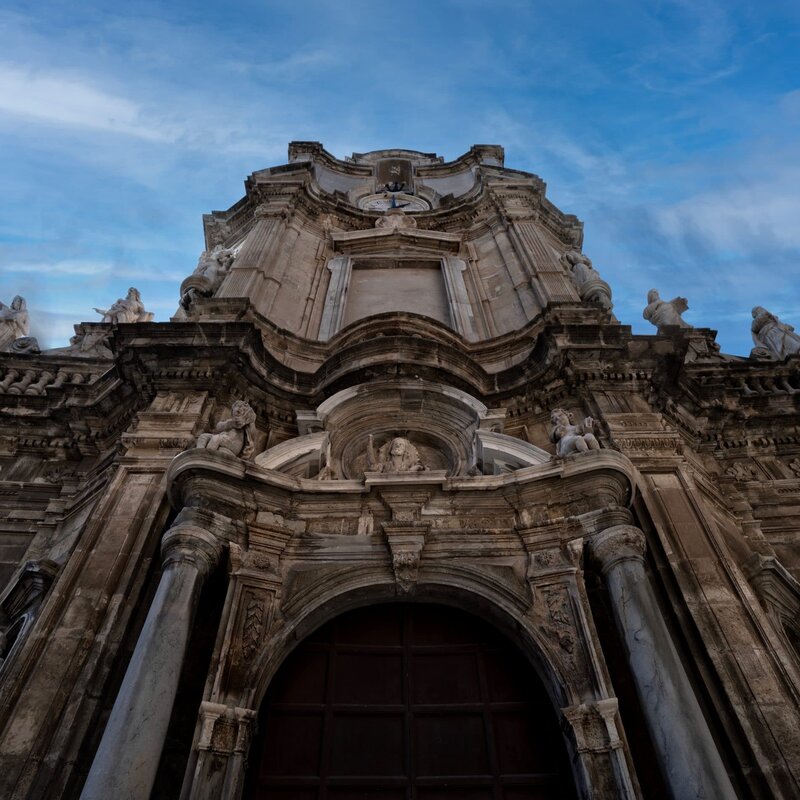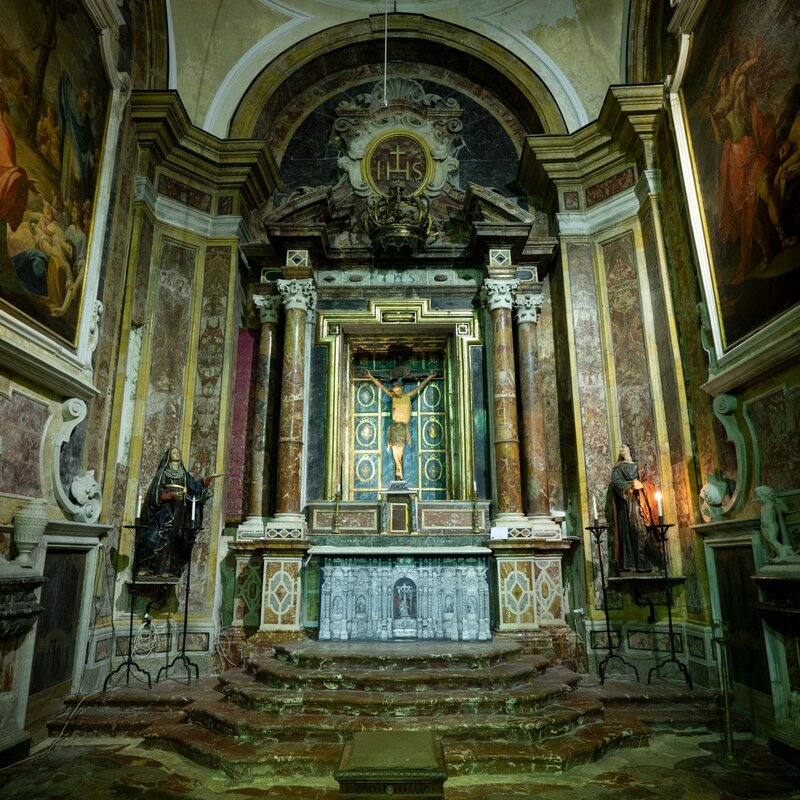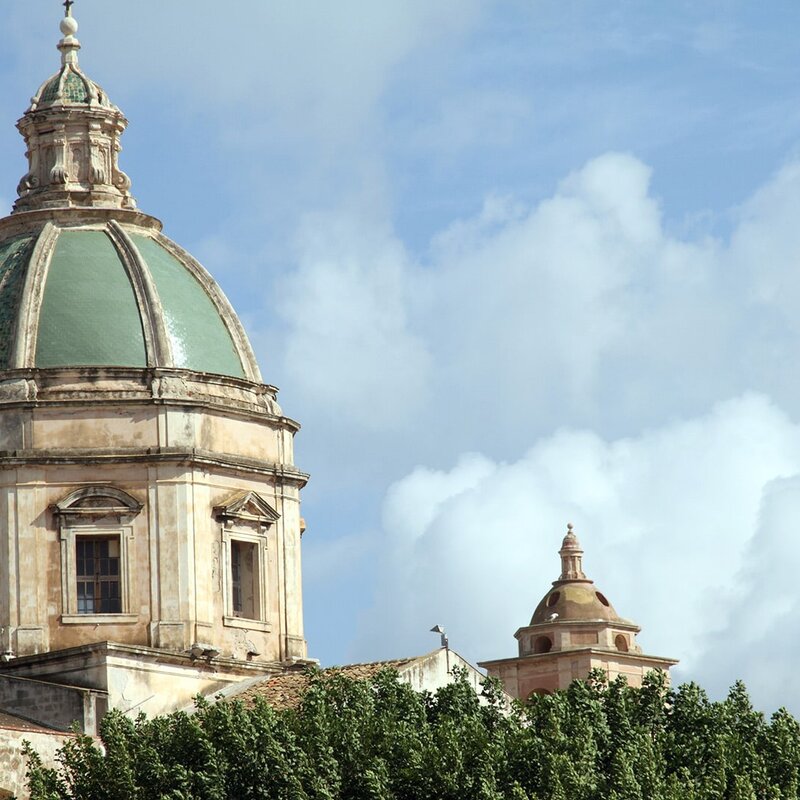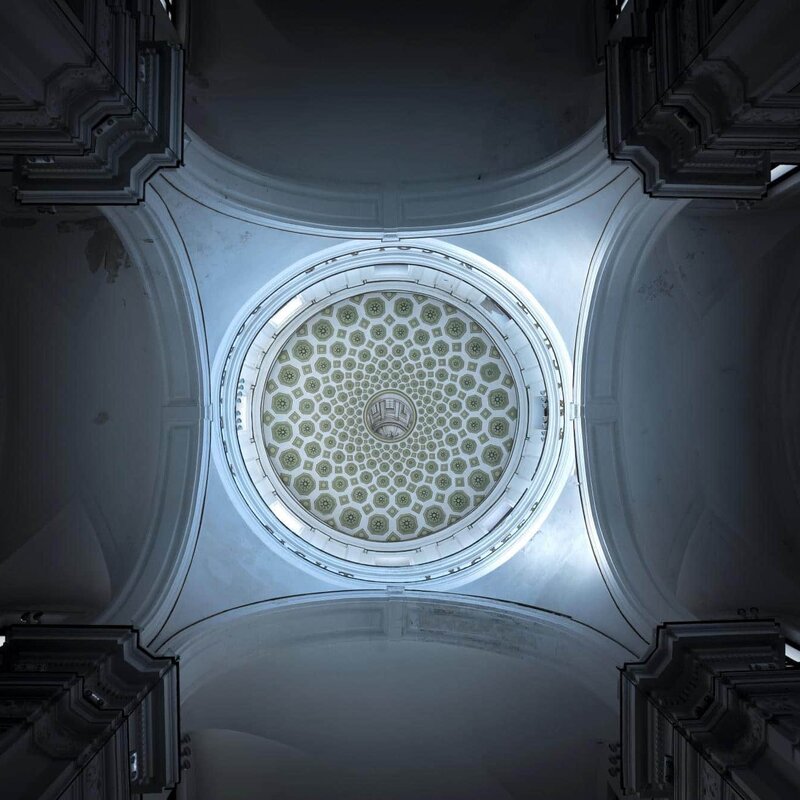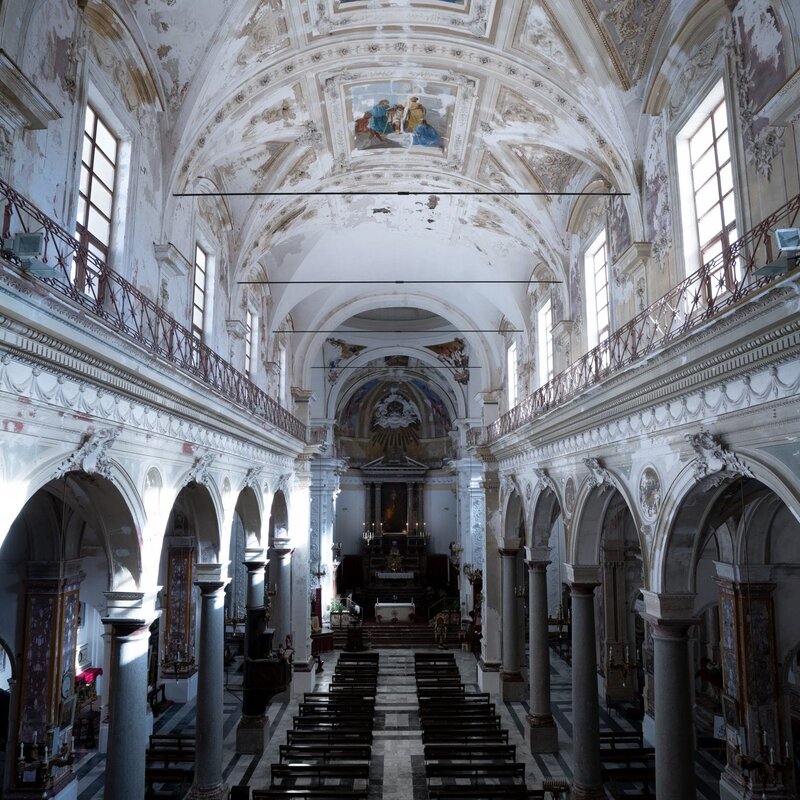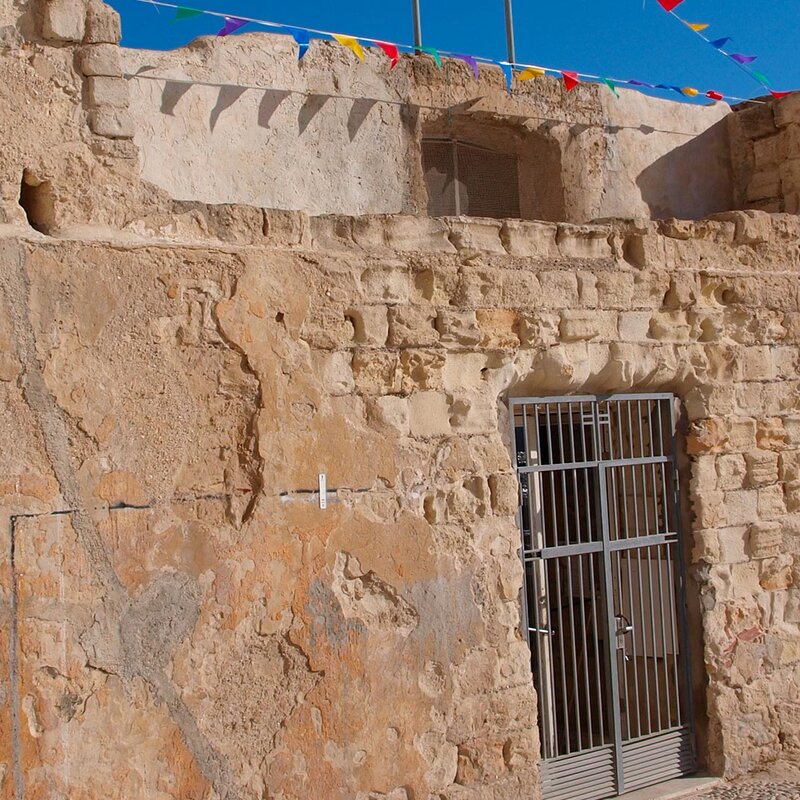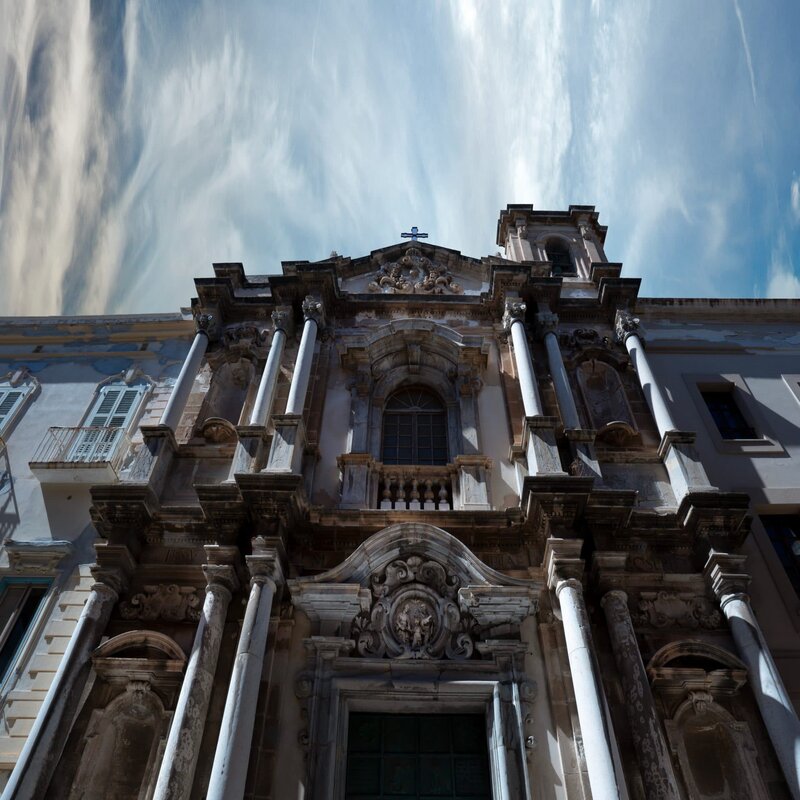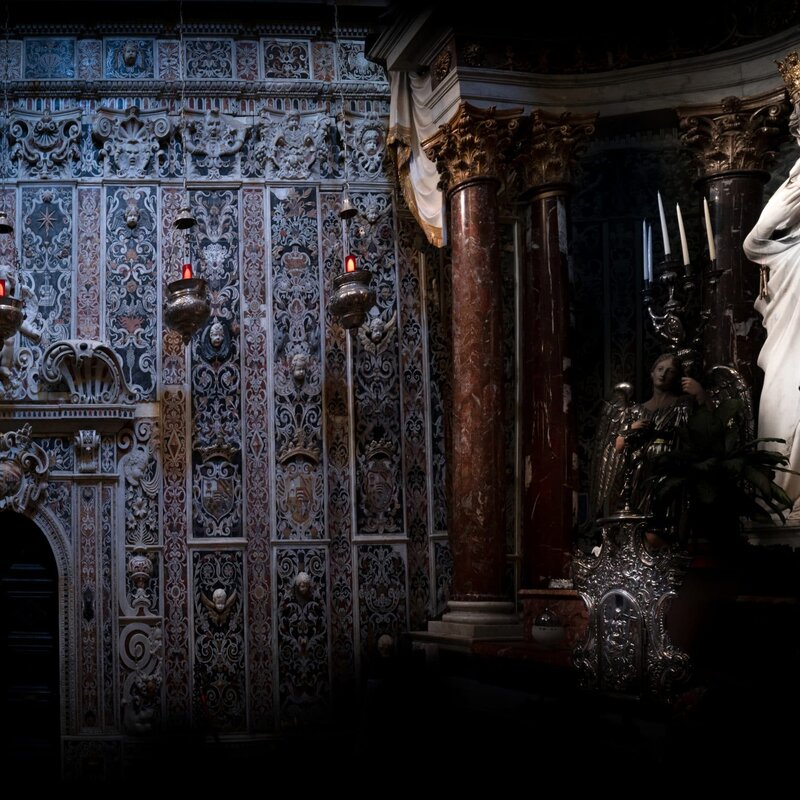LBL_SPLAN_CHIESE
Church of the College (Immaculate Conception)
The building of worship is well recognizable for its Mannerist-Baroque prospectus, characterized by a strong movement, accentuated by frames, scrolls, statues and broken gables, whose design is due to the Lucchese Francesco Bonamici. Inside, with a nave and two side aisles, there is a striking whiteness embellished by golden details and enlivened by the stuccoes of the Serpotta school, by Bartolomeo Sanseverino, depicting biblical episodes. The chapel dedicated to Saint Ignatius of Loyola, designed by the architect G.B. Amico and decorated according to the taste of the time with marbles, stuccoes and reliquaries, is of great value. On the high altar there is a relief with the Virgin Mary Immaculate, made of Carrara marble by Ignazio Marabitti. Other valuable elements are: a wooden crucifix by Giuseppe Milanti, paintings by important artists such as the Flemish Geronimo Gerardi, a valuable wooden cabinet (in the sacristy).. Address Corso Vittorio Emanuele , 12 90100 Trapani 09232362 Accessibility Accessible to disabled people
